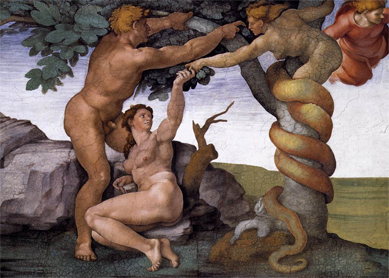The search for the garden of Eden on earth sounds like the very definition of a lost cause. After all, according to the biblical story that gave us the garden of Eden, God banished Adam and Eve from that original, perfect home in no uncertain terms. He placed cherubim and a flaming sword at its entrance to prevent people from reentering and so to keep the Tree of Life from mankind’s grasp.
And yet, there exists a long history in Christianity of mapping the garden of Eden. (Although Judaism and Islam share the story, both view it symbolically and so neither faith has an active tradition of seeking Eden on earth.) The impulse to locate the garden is sparked by
A river flows out of Eden to water the garden, and from there it divides and becomes four branches. The name of the first is Pishon; it is the one that flows around the whole land of Havilah, where there is gold; and the gold of that land is good; bdellium and onyx stone are there. The name of the second river is Gihon; it is the one that flows around the whole land of Cush. The name of the third river is Tigris, which flows east of Assyria. And the fourth river is the Euphrates.
The names of rivers and lands in this passage are so concrete, seekers felt, as to make Eden sound like a real place that could still, perhaps, be found. In the sixteenth century, Protestant theologian John Calvin’s edition of the popular Bishops’ Bible was the first to include a reference map of the Middle East, further encouraging the tradition of placing Eden in what’s now Iraq, home of the Tigris and Euphrates Rivers.
In the nineteenth century, archaeologists began to reinforce these connections, finding echoes of the Hebrew Bible’s stories in the written texts of the ancient Sumerians, who lived in southern Mesopotamia around 3000 B.C.E. Their descriptions of a magical land called Dilmun seemed to match the idea of Eden as a place of perfection and plenty, far removed from daily life. The vast, ancient marshes of southern Iraq are also thought to be an inspiration for Eden. One modern Iraqi town nearby has a shrine for a tree said to be the Tree of Knowledge. But the Eden story is part of the Bible’s prehistory, reaching back earlier than the invention of writing, and there may never be a way to prove its location.
This may explain why people continue to create new, ever more fanciful maps of Eden—following those other two rivers of paradise, the Pishon and the Gihon, which have yet to be definitively located. British general Charles Gordon tried to prove in 1885 that the island of Praslin, in the Seychelles, conformed to the biblical description. In 1914, Chinese Christian revolutionary Tse Tsan Tai published a hand-drawn map locating the four rivers in Outer Mongolia. And in 1971, Florida lawyer Elvy E. Callaway insisted that God had created mankind in the Florida Panhandle, and you could take a tour, for a small entry fee.
Bibliography
- Cline, Eric. From Eden to Exile: Unraveling Mysteries of the Bible. Washington, D.C.: National Geographic Society, 2007.
- Delumeau, J., and M. O’Connell. The History of Paradise: The Garden of Eden in Myth and Tradition. New York: Continuum, 1995.
- Scafi, Alessandro. Mapping Paradise: The History of Heaven on Earth. Chicago: University of Chicago Press, 2006.
- Wilensky-Lanford, Brook. Paradise Lust: Searching for the Garden of Eden. New York: Grove Press, 2011.





